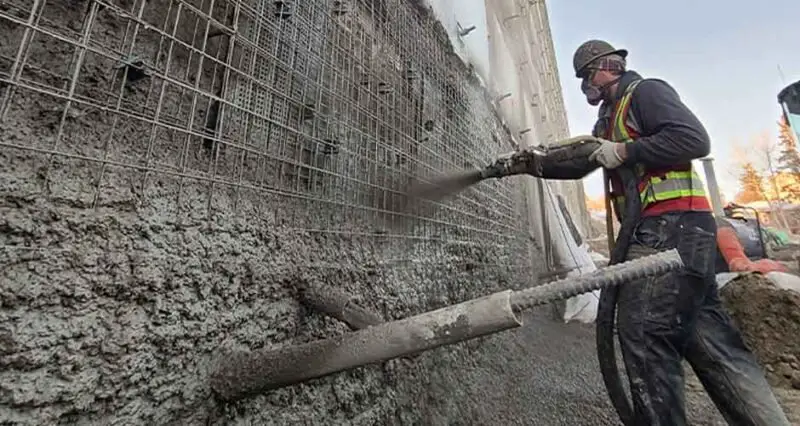
Civil engineering and construction together often need to find innovative solutions to address the challenges of tunnelling and underground construction. Shotcrete is a modern, versatile and effective solution that has revolutionised the industry, as evidenced by the growth of businesses such as shotcrete contractor in Sydney. With its adaptability to various project requirements and its numerous advantages, shotcrete has become a go-to choice for engineers and contractors worldwide. This blog post will explore the applications, benefits, and significance of shotcrete for tunnelling and underground construction.
Understanding Shotcrete
Shotcrete, also known as sprayed concrete, is a construction material that is pneumatically projected at high velocity onto a surface. It is typically applied using a concrete pump and a specialised nozzle, allowing for efficient and precise placement. Shotcrete can be either dry mix, where the dry ingredients are mixed with water at the nozzle, or wet mix, where all ingredients are mixed before being pumped. This flexibility in application makes shotcrete suitable for a wide range of construction projects, including tunnels, mines, shafts, and underground structures.
Applications in Tunnelling
Shotcrete plays a crucial role in tunnelling projects, providing structural support, waterproofing, and erosion resistance. In tunnel construction, shotcrete is applied directly onto the excavated surface to stabilize the ground, prevent collapses, and create a durable lining. It adheres well to various substrates, including rock, soil, and existing concrete, making it ideal for reinforcing tunnel walls and roofs. Moreover, shotcrete can be applied in thin layers, allowing for precise shaping and contouring to accommodate the specific geometry of the tunnel.
Advantages of Shotcrete
One of the primary advantages of shotcrete is its rapid application and curing time, which helps expedite construction schedules. Unlike traditional concrete, which requires formwork and curing time, shotcrete can be applied directly onto the surface, reducing labour and material costs. Additionally, shotcrete provides excellent strength and durability, surpassing that of conventional concrete in many cases. Its ability to bond tightly with substrates and withstand high pressures makes it an ideal choice for underground applications where structural integrity is paramount.
Environmental Considerations
Shotcrete offers environmental benefits as well, particularly in terms of reducing material waste and energy consumption. Since shotcrete is applied directly onto the surface without the need for formwork, it minimises material wastage and reduces the carbon footprint associated with construction. Furthermore, shotcrete can be formulated using recycled aggregates and supplementary cement-based materials, further enhancing its sustainability credentials. By adopting shotcrete technology, contractors can contribute to more eco-friendly construction practices while meeting project requirements effectively.
The Role of Shotcrete Contractors
Shotcrete application requires specialised knowledge, equipment, and skills, highlighting the importance of partnering with experienced shotcrete contractors. In Sydney, for example, reputable contractors offer expertise in shotcrete application for tunnelling and underground construction projects.
To sum up, shotcrete has become a versatile and indispensable solution for tunnelling and underground construction projects. Its rapid application, superior strength, and environmental benefits make it an attractive choice for engineers and contractors seeking efficient and sustainable construction methods. Whether it’s stabilising tunnel walls, reinforcing underground structures, or providing waterproofing, shotcrete will continue to play an important role in shaping the future of infrastructure development.


